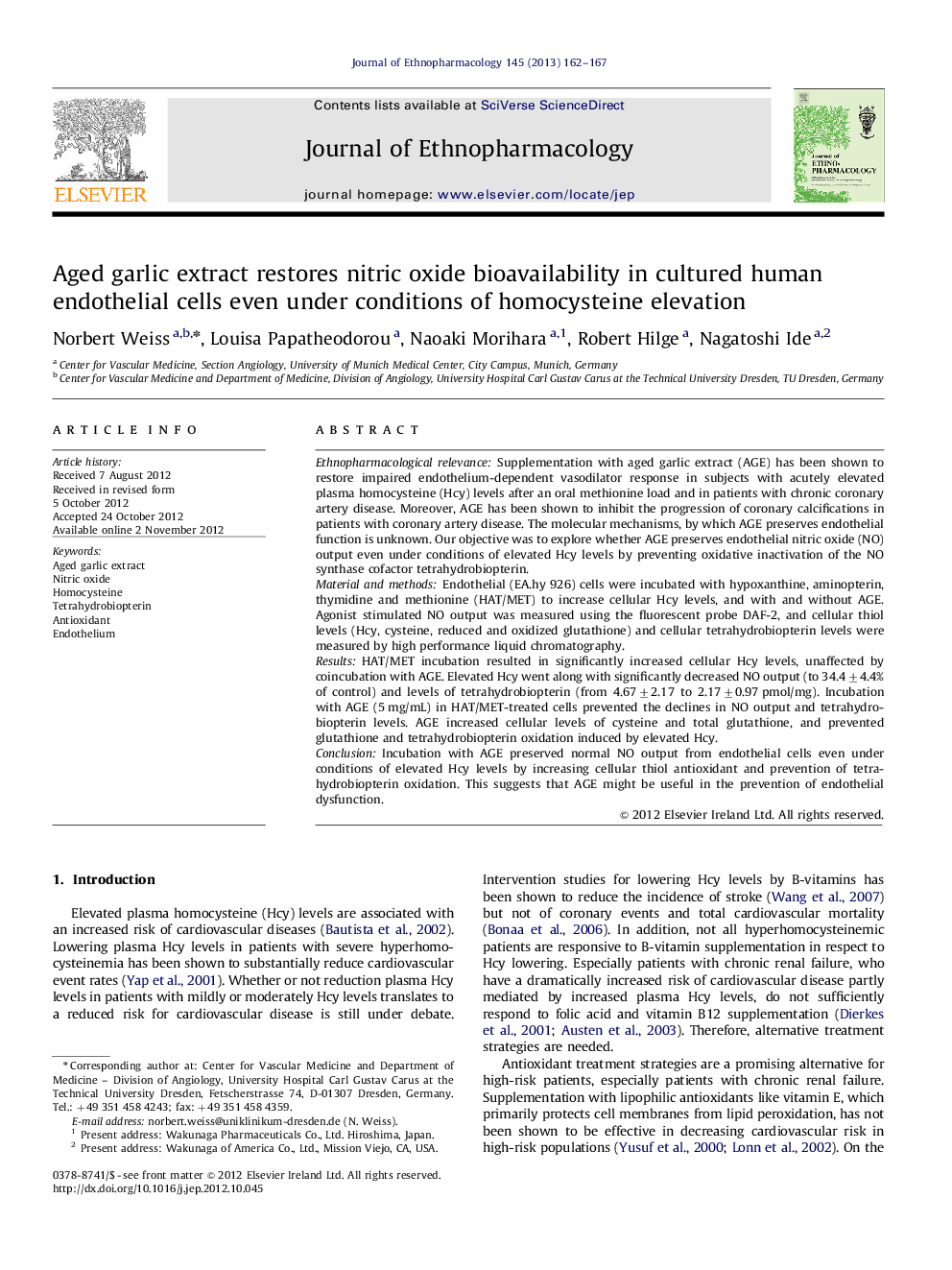| Article ID | Journal | Published Year | Pages | File Type |
|---|---|---|---|---|
| 5838099 | Journal of Ethnopharmacology | 2013 | 6 Pages |
Ethnopharmacological relevanceSupplementation with aged garlic extract (AGE) has been shown to restore impaired endothelium-dependent vasodilator response in subjects with acutely elevated plasma homocysteine (Hcy) levels after an oral methionine load and in patients with chronic coronary artery disease. Moreover, AGE has been shown to inhibit the progression of coronary calcifications in patients with coronary artery disease. The molecular mechanisms, by which AGE preserves endothelial function is unknown. Our objective was to explore whether AGE preserves endothelial nitric oxide (NO) output even under conditions of elevated Hcy levels by preventing oxidative inactivation of the NO synthase cofactor tetrahydrobiopterin.Material and methodsEndothelial (EA.hy 926) cells were incubated with hypoxanthine, aminopterin, thymidine and methionine (HAT/MET) to increase cellular Hcy levels, and with and without AGE. Agonist stimulated NO output was measured using the fluorescent probe DAF-2, and cellular thiol levels (Hcy, cysteine, reduced and oxidized glutathione) and cellular tetrahydrobiopterin levels were measured by high performance liquid chromatography.ResultsHAT/MET incubation resulted in significantly increased cellular Hcy levels, unaffected by coincubation with AGE. Elevated Hcy went along with significantly decreased NO output (to 34.4±4.4% of control) and levels of tetrahydrobiopterin (from 4.67±2.17 to 2.17±0.97 pmol/mg). Incubation with AGE (5 mg/mL) in HAT/MET-treated cells prevented the declines in NO output and tetrahydrobiopterin levels. AGE increased cellular levels of cysteine and total glutathione, and prevented glutathione and tetrahydrobiopterin oxidation induced by elevated Hcy.ConclusionIncubation with AGE preserved normal NO output from endothelial cells even under conditions of elevated Hcy levels by increasing cellular thiol antioxidant and prevention of tetrahydrobiopterin oxidation. This suggests that AGE might be useful in the prevention of endothelial dysfunction.
Graphical abstractDownload high-res image (180KB)Download full-size image
